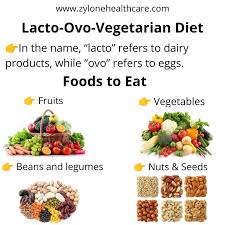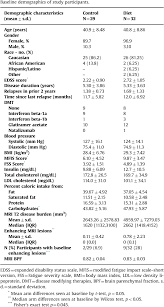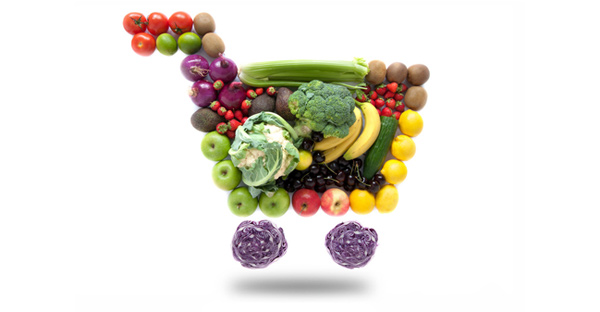
Plant based protein is the future. With nearly 9Billion people expected to live in the world by 2050, it is impossible to feed our families on meat alone. Plant-based sources of protein are more environmentally friendly and better for our health. These sources of protein also contain lower levels of iron and vitamin A12.
Reduces the risk of cancer
A plant-based diet can help reduce your cancer risk by increasing your consumption of vegetables, fruits nuts, legumes and other foods. It can reduce your chances of getting cancer and help you maintain a healthy weight. When combined with exercise, a plant-based diet can make a big difference in your overall health.
Plant-based food are rich in antioxidants called phytochemicals. Flavonoids are one of the most studied subgroups of phytochemicals, and they're associated with reduced cancer risk. The phytochemicals found in plant-based foods work both independently and together to reduce cancer risk. These antioxidants perform best when combined with other plant foods such as fruits, vegetables, and seeds.

Reduces the risk of heart disease
Recent research shows that replacing animal protein by plant-based protein can reduce the chance of developing heart disease. This finding is consistent in previous research that linked red meat consumption to the development of cardiovascular disease. However, the data available about plant-based protein consumption are limited. The study does not include common food pairings or how foods were prepared. It relies on women's self-reported eating habits, and is restricted to postmenopausal women.
Although studies have shown that plant-based diets can reduce cardiovascular mortality, there is still limited empirical support for this claim. This could be because the induction time for CVD is very long and the plant-based food diet may not be the cause. Future research should focus on secondary prevention and the relationship between dose and cardiovascular health.
Reduces the risk of diabetes
Recent research has shown that decreasing the intake of animal protein can lower the risk of developing type 2. In a cohort study of 131,342 people, researchers found that replacing animal protein with plant-based protein significantly reduced the risk of developing diabetes. Researchers found that replacing five grams with plant protein would reduce the risk of developing diabetes 18 percent. Researchers linked the reduction in risk to plant protein's effects on blood glucose levels.
The study showed that those who followed a plant-based diet were 34% more likely to develop type-2 diabetes than those who did not. This effect was independent of body mass index or other diabetes risk factors.

Reduces the risk of obesity
Recent research shows that plant-based proteins can help lower your risk of becoming obese and reduce your body fat. This is supported by a 16-week randomized controlled trial that evaluated the diets of participants. Plant-based protein intake was more efficient than conventional diets at reducing body weight and increasing insulin resistance. Even after taking into account energy intake and BMI, the relationship remained strong.
Plant-based proteins are also good for your cardiovascular system. It helps reduce the risk of developing heart disease through coronary disease. A recent study showed that people who eat a plant-based food diet are less likely than those who have suffered from stroke or heart attacks. Furthermore, those who ate a plant-based diet had lower blood pressure, cholesterol, and Type 2 diabetes.
FAQ
Increase immunity with herbs or supplements
Natural remedies and herbs can be used to increase immune function. You can use ginger, garlic, echinacea oregano oil and ginkgo loba as common examples to boost immune function.
These herbs should not be considered as a substitute for conventional medical treatment. Side effects may include nausea, diarrhea, stomach cramps and headaches.
How do I get enough vitamins?
You can obtain most of your daily requirement through diet alone. Supplements are an option if you are low in any vitamin. You can purchase a multivitamin that includes all the vitamins needed. You can also buy individual vitamins in your local drugstore.
Talk to your doctor to find out which foods are rich in vitamins. Dark green leafy vegetables like spinach, broccoli and kale, as well as turnip greens and mustard greens such as turnip and mustard greens and bok choy, are rich in vitamins K & E.
Ask your doctor for advice if you are unsure how much vitamin to take. Your health history and current condition will inform the doctor about the recommended dosage.
How can I live a life that is full of joy every day?
Finding out what makes your heart happy is the first step to living a fulfilled life. Once you have a clear understanding of what makes you happy you can go backwards. You can also inquire about the lives of others.
You can also find books such as "How to Live Your Best Life" written by Dr. Wayne Dyer. He talks about finding happiness in all areas of your life and finding fulfillment.
Which diet is best for me?
The best diet for you depends on several factors, like your age, gender, weight, health conditions, and lifestyle habits. Consider how much energy and low-calorie foods you consume, as well as whether or not you are a fan of fruits and vegetables.
Intermittent fasting may be a good choice if you want to lose weight. Intermittent fasting involves consuming only specific meals throughout the day, rather than having three large meals. This may be a better option than traditional diets with daily calorie counts.
Research suggests that intermittent fasting may increase insulin sensitivity and reduce inflammation. This can result in improved blood sugar levels as well as a lower risk of developing diabetes. Intermittent fasting has been shown to promote fat loss as well as improve overall body composition.
How often should I exercise
Fitness is key to a healthy lifestyle. You don't have to exercise for a certain amount of time. Find something you like and stay with it.
If you work out three times a week, then aim to complete 20-30 minutes of moderate intensity physical activity. Moderate intensity will mean that you'll continue to be exerting yourself afterward. This type workout burns about 300 calories.
If you prefer to walk, go for 10 minute walks four days a week. Walking is low in impact and easy for your joints.
You can also run for 15 minutes, three times per week. Running can help you burn calories and to tone your muscles.
Start slowly if you aren't used to doing exercise. Begin with 5 minutes of cardio every other day. Gradually increase the duration until you reach your goal.
What is the difference between sugar and fat?
Fat is an energy source that comes directly from food. Sugar is a sweet, naturally occurring substance in fruits and vegetables. Both fats and sugars provide the same number of calories. But fats are twice as calories as sugars.
Fats are stored in the body and contribute to obesity. They cause cholesterol buildup in arteries which may lead to heart attacks and strokes.
Sugars are quickly absorbed and provide instant energy. This causes blood glucose levels to rise. High blood glucose levels can be dangerous because it increases the risk of developing type II diabetes.
Statistics
- WHO recommends reducing saturated fats to less than 10% of total energy intake; reducing trans-fats to less than 1% of total energy intake; and replacing both saturated fats and trans-fats to unsaturated fats. (who.int)
- The Dietary Guidelines for Americans recommend keeping added sugar intake below 10% of your daily calorie intake, while the World Health Organization recommends slashing added sugars to 5% or less of your daily calories for optimal health (59Trusted (healthline.com)
- nutrients.[17]X Research sourceWhole grains to try include: 100% whole wheat pasta and bread, brown rice, whole grain oats, farro, millet, quinoa, and barley. (wikihow.com)
- According to the 2020 Dietary Guidelines for Americans, a balanced diet high in fruits and vegetables, lean protein, low-fat dairy and whole grains is needed for optimal energy. (mayoclinichealthsystem.org)
External Links
How To
How to Live A Healthy Lifestyle
A healthy lifestyle is one that allows you to maintain your weight, your health, and your fitness. This lifestyle includes healthy eating habits, regular exercise, adequate sleep, and abstaining from drugs, alcohol, caffeine, tobacco and other harmful substances. Healthy lifestyles help you to feel great about yourself, stay active, and be healthy. A healthy lifestyle can help reduce your risk of developing chronic diseases such as heart disease, strokes, diabetes, cancer and osteoporosis.
This project had the main objective of providing a step-by–step guide to living a healthier lifestyle. The first part of the project consisted of writing the introduction, which explains what a healthy lifestyle is, why people should adopt a healthy lifestyle and who we are. Next, I wrote the body paragraphs. These include tips and tricks for maintaining a healthy lifestyle. The conclusion summarizes the article and offers additional resources if necessary.
This assignment helped me learn how to write a clear and concise paragraph. I learned how topic sentences and supporting details were organized. Furthermore, I was able to improve my research skills by being able to identify specific sources and correctly cite them. Finally, I learned how to properly use grammar when writing.